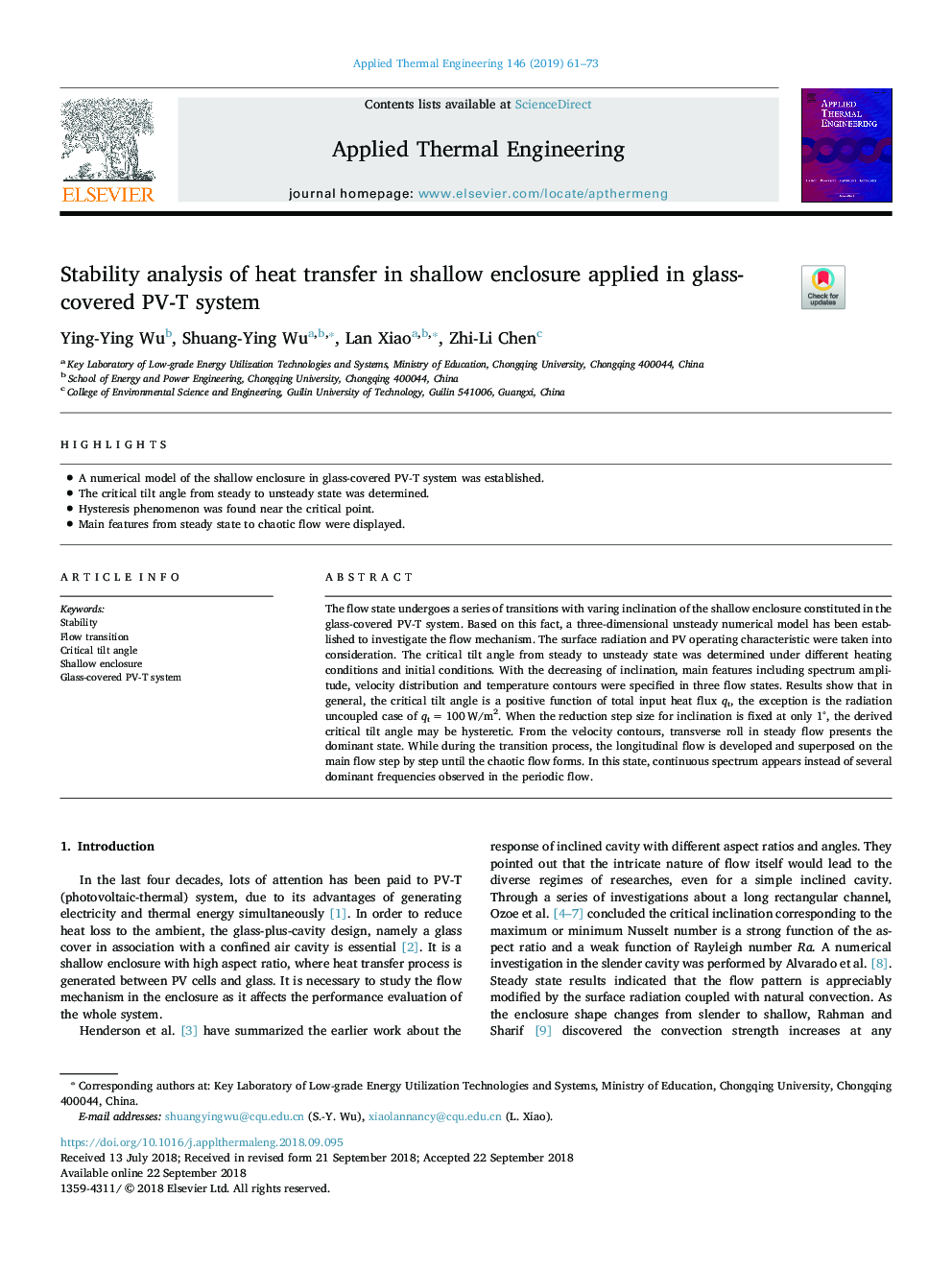| Article ID | Journal | Published Year | Pages | File Type |
|---|---|---|---|---|
| 11020801 | Applied Thermal Engineering | 2019 | 13 Pages |
Abstract
The flow state undergoes a series of transitions with varing inclination of the shallow enclosure constituted in the glass-covered PV-T system. Based on this fact, a three-dimensional unsteady numerical model has been established to investigate the flow mechanism. The surface radiation and PV operating characteristic were taken into consideration. The critical tilt angle from steady to unsteady state was determined under different heating conditions and initial conditions. With the decreasing of inclination, main features including spectrum amplitude, velocity distribution and temperature contours were specified in three flow states. Results show that in general, the critical tilt angle is a positive function of total input heat flux qt, the exception is the radiation uncoupled case of qtâ¯=â¯100â¯W/m2. When the reduction step size for inclination is fixed at only 1°, the derived critical tilt angle may be hysteretic. From the velocity contours, transverse roll in steady flow presents the dominant state. While during the transition process, the longitudinal flow is developed and superposed on the main flow step by step until the chaotic flow forms. In this state, continuous spectrum appears instead of several dominant frequencies observed in the periodic flow.
Keywords
Related Topics
Physical Sciences and Engineering
Chemical Engineering
Fluid Flow and Transfer Processes
Authors
Ying-Ying Wu, Shuang-Ying Wu, Lan Xiao, Zhi-Li Chen,
